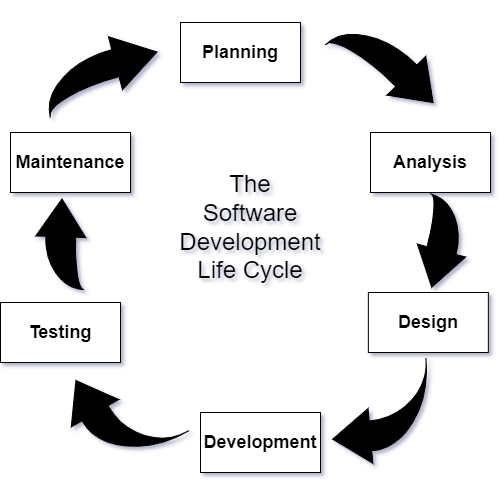Understanding the Software Development Life Cycle (SDLC) and Its Role in DevOps
 Kajal Patil
Kajal Patil
The Software Development Life Cycle (SDLC) offers a structured framework for software development, ensuring processes are systematic, efficient, and controlled. This article delves into each SDLC phase and demonstrates how DevOps practices enhance these stages, using real-life examples to clarify key concepts.
What is the SDLC?
The SDLC is a framework that defines the stages of software development, from initial planning to final deployment and maintenance. Its goal is to produce high-quality software that meets or exceeds customer expectations.
Phases of the SDLC and Their DevOps Integration
Planning:
The planning phase involves defining the project scope, objectives, and feasibility. It includes identifying resources, creating timelines, and setting budgets. In a DevOps environment, this phase incorporates continuous feedback and agile methodologies. Tools like Jira facilitate real-time collaboration and project management, allowing for iterative planning and adjustments based on ongoing feedback. For instance, a company developing a new customer relationship management (CRM) system might start by defining goals such as improving customer data management. Using agile sprints, they adjust plans as feedback is received and priorities shift.
Analysis:
During the analysis phase, detailed requirements are gathered from stakeholders and analyzed to understand what the software needs to achieve. DevOps emphasizes continuous analysis with automated tools that gather user feedback and align requirements with business goals throughout the development process. For the CRM system, the team interviews sales and customer service staff to gather requirements. Continuous feedback from users, collected through analytics tools, helps refine and adjust these requirements as development progresses.
Design:
The design phase translates requirements into a blueprint for building the software, including the architecture, user interfaces, and data models. In DevOps, design involves using Infrastructure as Code (IaC) to automate environment setup and employing collaborative design tools that support agile methodologies. This ensures that design decisions are seamlessly integrated into the development process. For example, designers create wireframes for the CRM system’s interfaces and define the database schema. IaC tools automate the creation of development environments, ensuring consistency and efficiency in setting up necessary infrastructure.
Development:
Development is the phase where the actual coding occurs based on design specifications. Developers write code, integrate components, and build the application. DevOps practices emphasize continuous integration (CI) with automated builds and testing. Developers use version control systems to manage changes and collaborate effectively, integrating new code frequently. For the CRM system, developers code features like the dashboard and customer management modules. Continuous integration tools automatically build and test the code with each commit, catching issues early and maintaining high-quality code.
Testing:
The testing phase ensures that the software is free of defects and meets the specified requirements. It involves various types of testing, including unit, integration, and system testing. In DevOps, continuous testing is integrated into the CI/CD pipeline. Automated tests run with every code commit, providing rapid feedback and ensuring that code changes do not introduce new defects. For the CRM system, automated testing as part of the CI/CD pipeline validates functionalities such as customer data entry and reporting, ensuring thorough testing and quick identification of defects.
Deployment:
Deployment involves releasing the software to the production environment, including setup, configuration, and user training. DevOps incorporates continuous deployment (CD) practices to automate the release process. Techniques like blue-green or canary deployments are used to minimize disruption and ensure smooth releases. For the CRM system, CD pipelines automate the release process, and blue-green deployments are employed to switch between production environments with minimal downtime, facilitating a smooth transition to the new version.
Maintenance:
Maintenance involves ongoing support, bug fixes, and updates to keep the software functioning effectively. It addresses issues that arise after deployment and incorporates enhancements. In DevOps, maintenance is supported by monitoring and logging tools that provide insights into system performance. Automated rollback procedures are used to quickly address issues and ensure continuous stability. After deployment, the CRM system is monitored using DevOps tools that track performance and detect issues. If a new release causes problems, automated rollback procedures restore the previous stable version to maintain system reliability.
Conclusion
The Software Development Life Cycle (SDLC) offers a structured approach to software development, from planning to maintenance. Integrating DevOps practices into each phase of the SDLC enhances efficiency, collaboration, and software quality. By applying these principles, teams can deliver software that meets user needs, adapts to changing requirements, and ensures a smooth and successful development process.
Subscribe to my newsletter
Read articles from Kajal Patil directly inside your inbox. Subscribe to the newsletter, and don't miss out.
Written by
